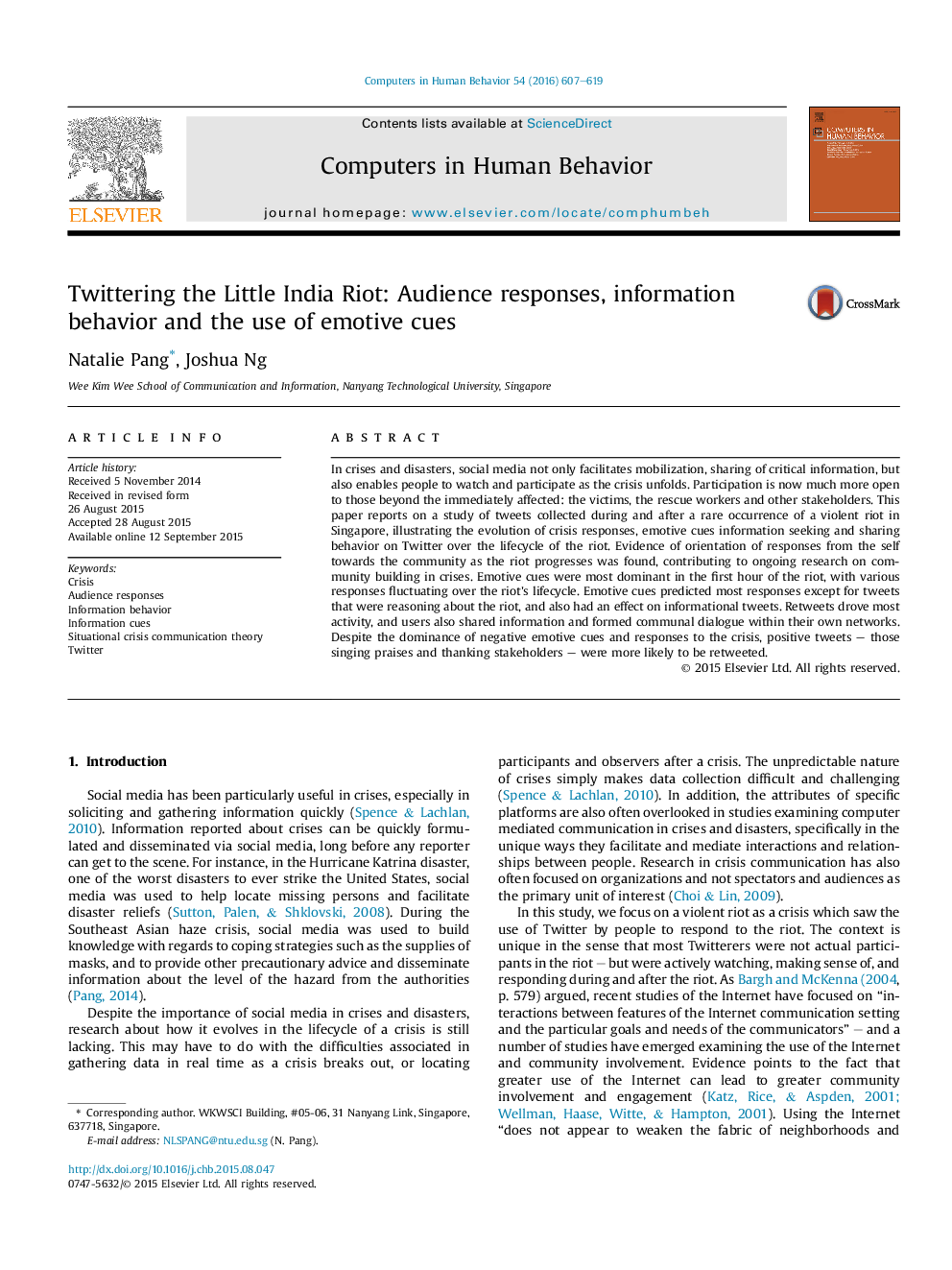| Article ID | Journal | Published Year | Pages | File Type |
|---|---|---|---|---|
| 6837913 | Computers in Human Behavior | 2016 | 13 Pages |
Abstract
In crises and disasters, social media not only facilitates mobilization, sharing of critical information, but also enables people to watch and participate as the crisis unfolds. Participation is now much more open to those beyond the immediately affected: the victims, the rescue workers and other stakeholders. This paper reports on a study of tweets collected during and after a rare occurrence of a violent riot in Singapore, illustrating the evolution of crisis responses, emotive cues information seeking and sharing behavior on Twitter over the lifecycle of the riot. Evidence of orientation of responses from the self towards the community as the riot progresses was found, contributing to ongoing research on community building in crises. Emotive cues were most dominant in the first hour of the riot, with various responses fluctuating over the riot's lifecycle. Emotive cues predicted most responses except for tweets that were reasoning about the riot, and also had an effect on informational tweets. Retweets drove most activity, and users also shared information and formed communal dialogue within their own networks. Despite the dominance of negative emotive cues and responses to the crisis, positive tweets - those singing praises and thanking stakeholders - were more likely to be retweeted.
Related Topics
Physical Sciences and Engineering
Computer Science
Computer Science Applications
Authors
Natalie Pang, Joshua Ng,
